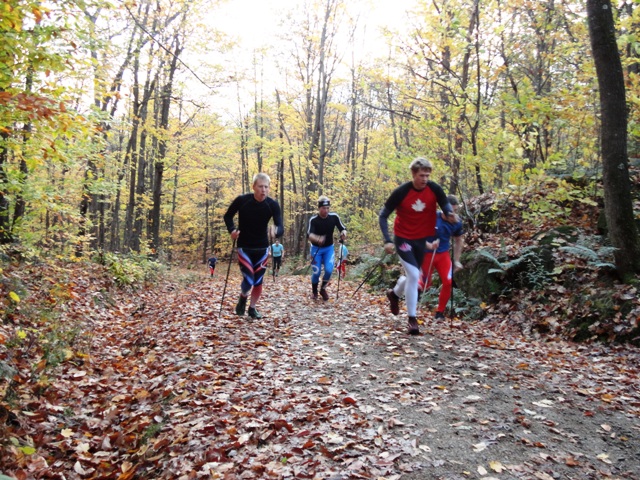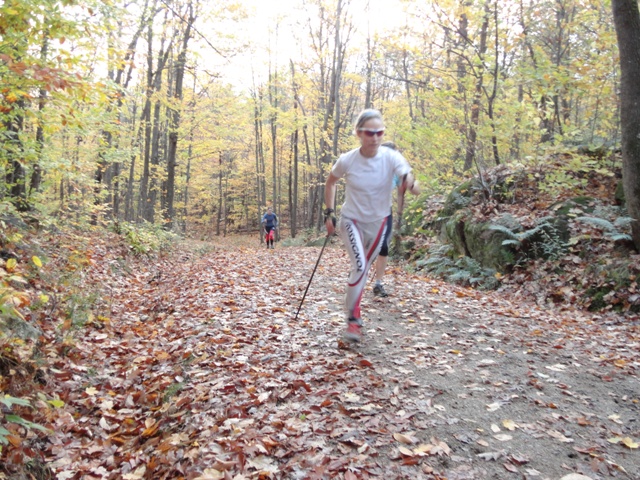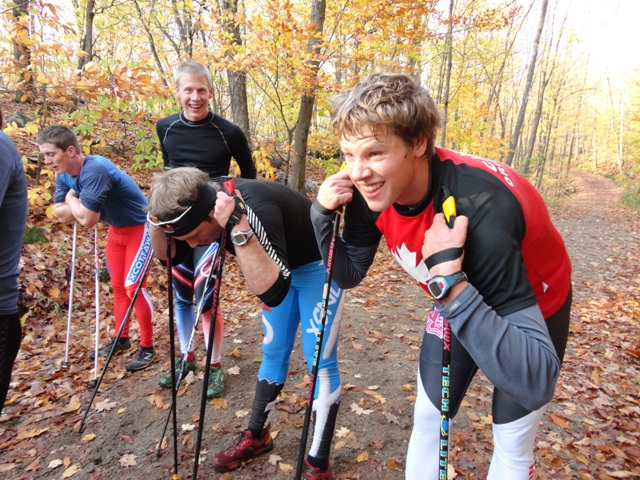As the ski season gets closer, skiers must be prepared to race numerous times over the winter months, and what better way to prepare for this than by†doing intervals?†If done properly,†intervals can do wonders to a skierís fitness, but if done wrong, they can be very detrimental and even†damaging. Below are some tips to help you get the most benefit from your intervals.
Get a proper warm-up. The worst way to start off an interval is with cold muscles. Not only will you feel terrible, but you will also be at very high risk of triggering a serious injury that can last for months, if not years. Getting in a good warm up can be tricky, as there are several things to be done to get you optimally prepared for the interval. A thorough warm up needs to be at least 20 minutes long. Also, you should spend time in zone 2, or higher depending on your interval zone. This ensures that your heart rate speeds up a bit to prepare you for the interval set. Once youíve added in the proper amount of time and zones into your warm up, you should be good to start the intervals!
Stay in the correct zone. If your intervals are in zone 3, you should not be doing them in zone 4. It is much easier to go above a training zone rather than below, especially if you are training with others, so it is very important to pace yourself. A heart rate monitor is an excellent way of determining which zone you are in, making it very useful for interval training. Pacing is especially important in long interval sets, where going out too hard for the first interval can completely ruin the rest. For longer sets, it is always a good idea to hold back a little bit for the first few intervals, to ensure that you do not go out to hard. After the first few, it is usually surprising how fast you can get into the proper zone as your body starts creating more and more lactate.
Focus on your technique. Intervals are not just for training your body in higher zones, they are also a method of engraving technique in your mind. The technique that you do during intervals will be what your body reverts to in races. If you let your technique slide during your intervals so that you are skiing like a penguin, you will continue to ski like a penguin during your whole ski season. And letís face it: penguins donít ski very well! One of the best ways to engrave good technique into muscle memory is to do it during intervals. So the better your technique during intervals, the better it will be during racing!
Donít do intervals when youíre sick! This is probably one of the most stressed, yet ignored†principles of intervals. When your body is sick, it is already spending energy on recovering, and has very little left over for training. Doing intervals when sick only delays recovery, and has very little benefit overall. In general, if you are showing any symptoms of being sick, you should not be doing intervals. While it is hard to back out of a workout, it is much better to miss one interval session and recover quickly, than to be sick for weeks.

The boys doing intervals up Penguin.

Sheila working hard.

Vesta powering up the hill.

Tired after the intervals.
Happy Training!


